Wait, what?
Yes, I know I got the saying wrong, but we had a relatively cool and extremely wet spring, which meant April showers morphed into May showers, and quite a few June ones as well. Then boom, as if on cue, a heat wave arrived just as we passed the northern hemisphere’s longest day. Thanks to the miracle that is photosynthesis, our eyes can now revel in fresh blooms on every side.
Still, I’d be lying if I said this past week has not been hard. My foot is taking its own sweet time to heal, so no long walks, and today I don’t feel all that well. It’s hard to say whether that’s because I’m coming down with something or if it’s another symptom of the dark unease that hovers over every day of 2025.
What I can say is that however dark things may get, we have to keep turning toward the light. While it is good and right and healthy to object to the many wrongs being inflicted on other humans and on our planet, it is equally important to look to that same planet for signs of life and hope. As I worked through some columns earlier today, I was reminded that Ruth often did the same.
With that in mind, I am going to share a short photo essay, inspired by today’s column, originally dated June 13, 1993, which follows the photographs. I’d love it if you shared one or more of your own plant friends in the comment section.
I might not be taking any 5-mile hikes, but there is plenty of plant life within a few hundred feet of my home.
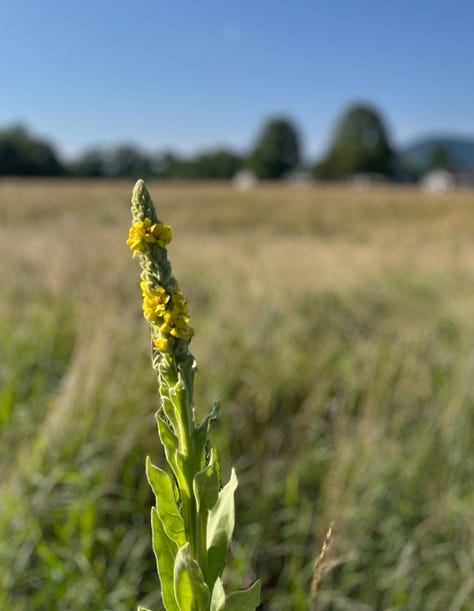
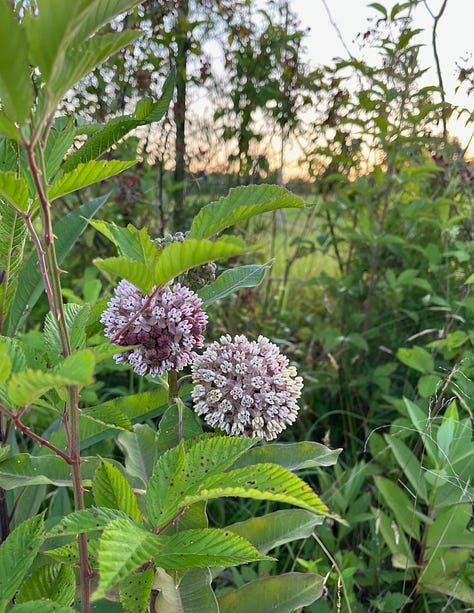
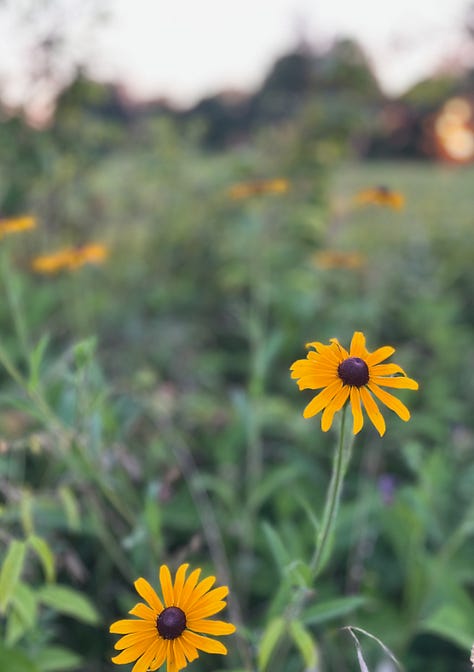
In late April or early May, I go to the FFA Greenhouse to buy tomato and pepper plants, along with whatever flowers happen to catch my eye. The plants are strong and healthy, and if we want to eat, we need to support organizations like 4-H and the FFA.
The past few years, I’ve enjoyed planting window boxes with vinca (Madagascar periwinkle) and coleus. Normally, they take right off, but this spring, they chose to bide their time. It is worth the wait.
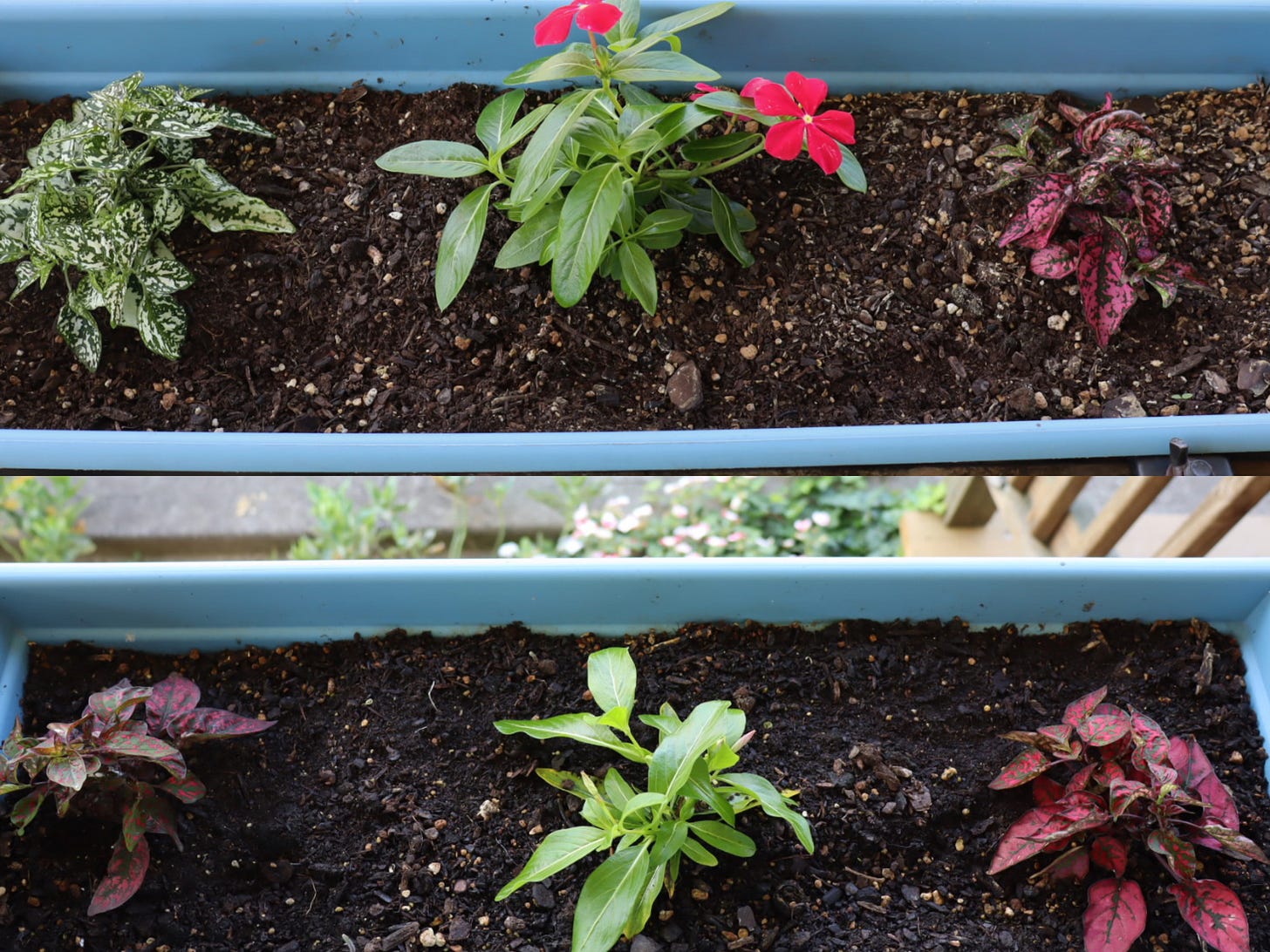
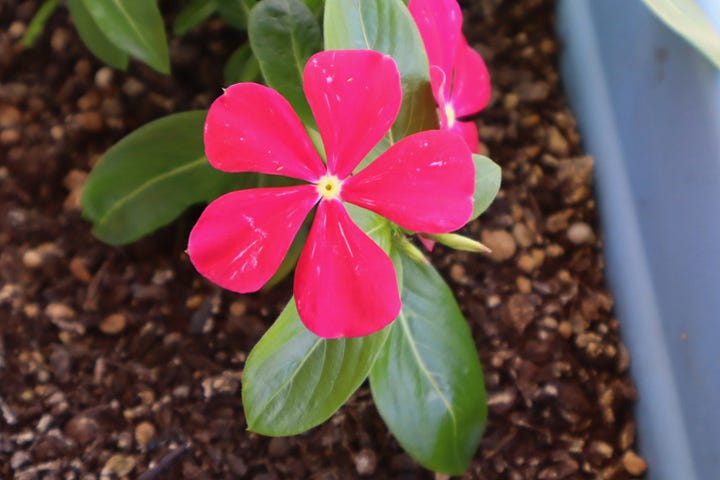
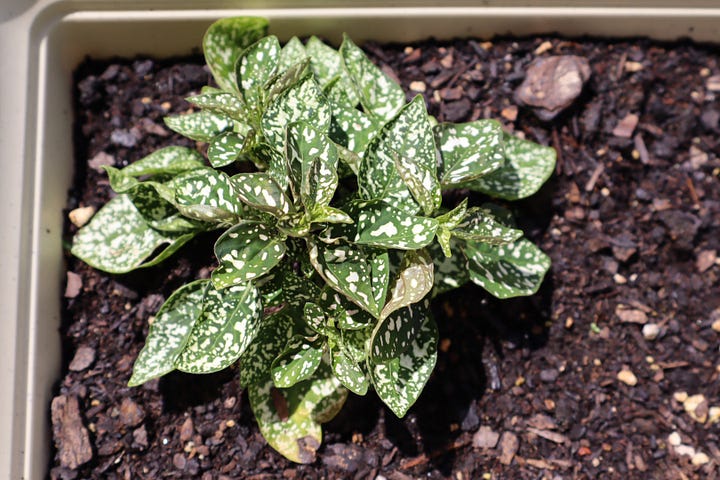
The emergence of these glads brings one of my favorite memories to mind. My then-husband and I moved to this house in March 2003, the same week we adopted our two daughters. My mom spent several days here helping us get settled, and one of our early adventures with the girls was going out to buy these bulbs, then planting them together. Each year, I wonder what colors will emerge—they’re never exactly the same from one year to the next.
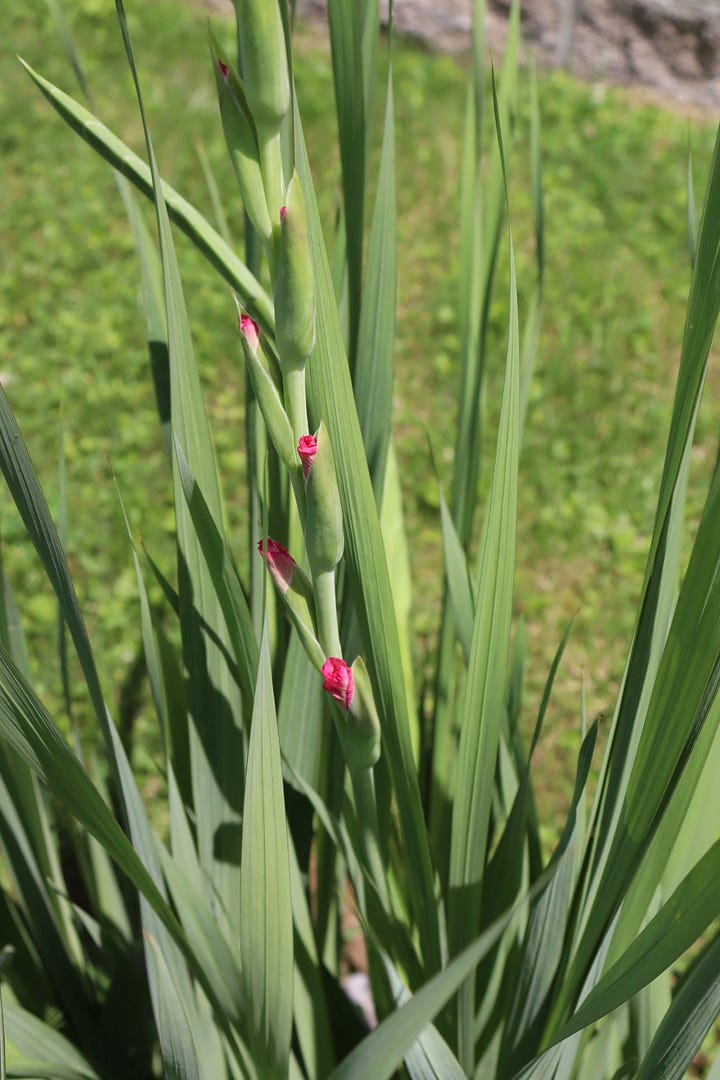
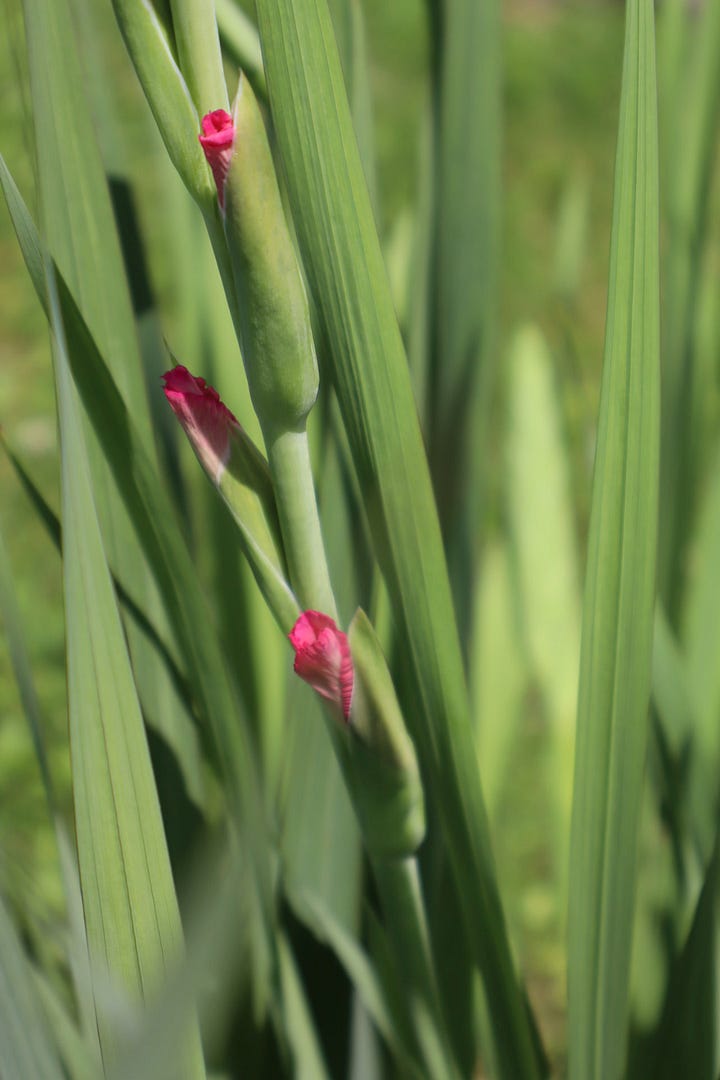
This lamb’s ear evokes a more recent memory. Much like Ruth describes in this week’s column, one of my friends was thinning her flower beds earlier this spring and she gave me this little guy to transplant. The bumblebees and butterflies are already in love, as am I.
I always buy impatiens from the FFA, but I don’t know that I really need to anymore, given the profusion of reseeded volunteers. If I had any notion of a color scheme, it’s all for naught—the plants have notions of their own! Not that I’m complaining. What better way to welcome visitors than with a riot of color.
Rural Reflections
By Ruth Dennis
The poppies may grow in orderly fashion, row on row, in Flanders Fields as the poet tells us, but they don’t in my back yard.
Their bright orange blossoms dominate even as their profusion indicates how they have taken over. They are even there in the middle of the Blaze rosebush, which grows upright but still needs “its own space.”
These poppies have their own story to be recalled each June. For years I had been determined to grow poppies because I loved their splashes of color, but each time I tried the plants simply withered away. I tried starting from seed. I tried plants given to me by friends, but it was always the same—no poppies. Then a friend wanting to thin her flower bed called, saying, “I have a hole dug; I am bringing you some of my poppy plants.” Those were and are the forerunners of the poppies blooming away in my flower bed. As for my friend, all her poppies died, and even a transfer of my plants back to her garden failed.
Such are the vagaries of the flora, whether growing along roadside or in fields, or in carefully tended flower beds. A case in point is the clump of purple columbine growing between my mailbox and the propane tank. Many years ago I had one or two columbine plants, but they died out. Now after an interval of five or more years, I have a healthy bed of these flowers that have grown from a since plant I discovered years two ago. How and why they are growing there, I do not know. As I tend the plants, I thank the bird or beast who brought the seeds to me.
The snowball bush halfway between the house and garage and next to the basswood tree has been covered with the clusters of white blossoms that give it the appropriate name. Its ancestor grew next to the “country school house” that stood many years ago in the corner of our farm pasture.1
When we first moved to the farm we took some roots and started a snowball bush closer to the house, and when we moved down the road a bit of that bush came with us. It has grown over the years and continues to be one of the joys of June.
The bluebells that just finished flowering were dug from an old farm yard. In the last year they have multiplied so that their stalks of bell-like flowers have brightened the hedge row and part of the flower garden.
The pale yellow iris at one end of the flower bed are a contrast to the showy orange poppies. Almost every year I plan to dig up the bulbs and exchange some of them for brighter blues or purples. I can't even remember where I got the first of the bulbs. It could have been from a garden at Scarsdale or from a garden a Walkersville, Md. But I think I know why I keep them with their delicate lemony hue: it is because even in the abundance of color, a balance is often needed.
Daylilies—I have them in abundance. They have all originated from a single bulb given to me by a dear friend living in Stroudsburg, Pa. many years ago. Their blooms in mid-summer are all the same color, but they provide a luxuriant growth of green around the back of my house and one side of the patio steps.
As not so long ago I was cutting the last of the daffodils for a house bouquet, I spotted them— the ever faithful johnny jump-ups. Their tiny blue pansy-like flowers told me winter was fast going and summer will soon be here. Within another week or two they were joined by several very healthy pansy plants. Somehow they, too, survived, or maybe they had an early start from the seed of last year’s flowers.
Now I have been planting the petunias, marigolds, pansies, portulaca and other annuals. They have their place in my flower beds, but they don’t have a story to tell or a memory to kindle.
When I begin to think “the world is too much with me” and I am depressed by the news of toil and trouble, I step outside to feast my eyes on the beauty and color of June that is all around me.
-----
Ruth Dennis of Jasper is a columnist for The Spectator.
I did not know about this schoolhouse before I read this week’s column. Live and learn!






